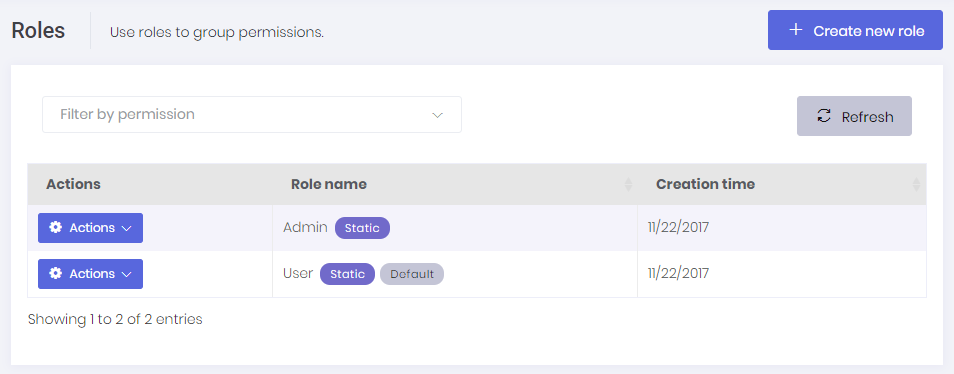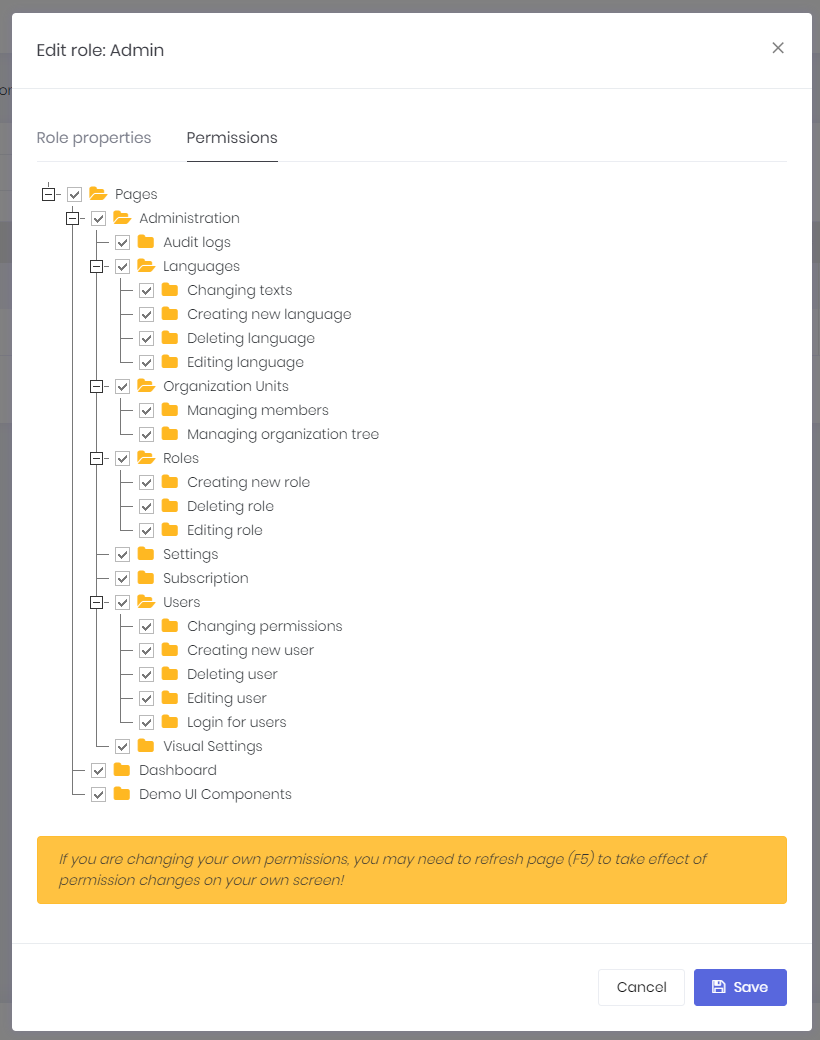Role Management
When we click Administration/Roles menu, we enter the role management page:

Roles are used to group permissions. When a user has a role, then he/she will have all permissions of that role.
A role is represented by the Role class. Role class can be extended by adding new properties.
RoleManager performs domain logic, RoleAppService performs application logic for roles.
Roles can be dynamic or static:
- Static role: A static role has a known name (like 'admin') and can not change this name (we can change display name). It's exists on the system startup and can not be deleted. Thus, we can write our code based on a static role name.
- Dynamic role: We can create a dynamic role after deployment. Then we can grant permissions for that role, we can assign the role to some users and we can delete it. We can not know the names of dynamic roles in development time.
One or more roles can be set as default. Default roles are assigned to new added/registered users as default. This is not a development time property and can be set or changed after deployment.
In startup project, we have static admin role for host (for multi-tenant apps). Also, we have static admin and user roles for tenants. Admin roles have all permissions granted by default. User role is the default role for new users and has no permission by default. These can be changed easily. See StaticRoleNames class for all static roles and AppRoleConfig for changing static roles.
Role Permissions
Since roles are used to group permissions, we can set permissions of a role while creating or editing as shown below:

Note that not all permissions shown in the figure above
Every tenant has its own roles and any change in roles for a tenant does not affect other tenants. Also, host has also own isolated roles.
